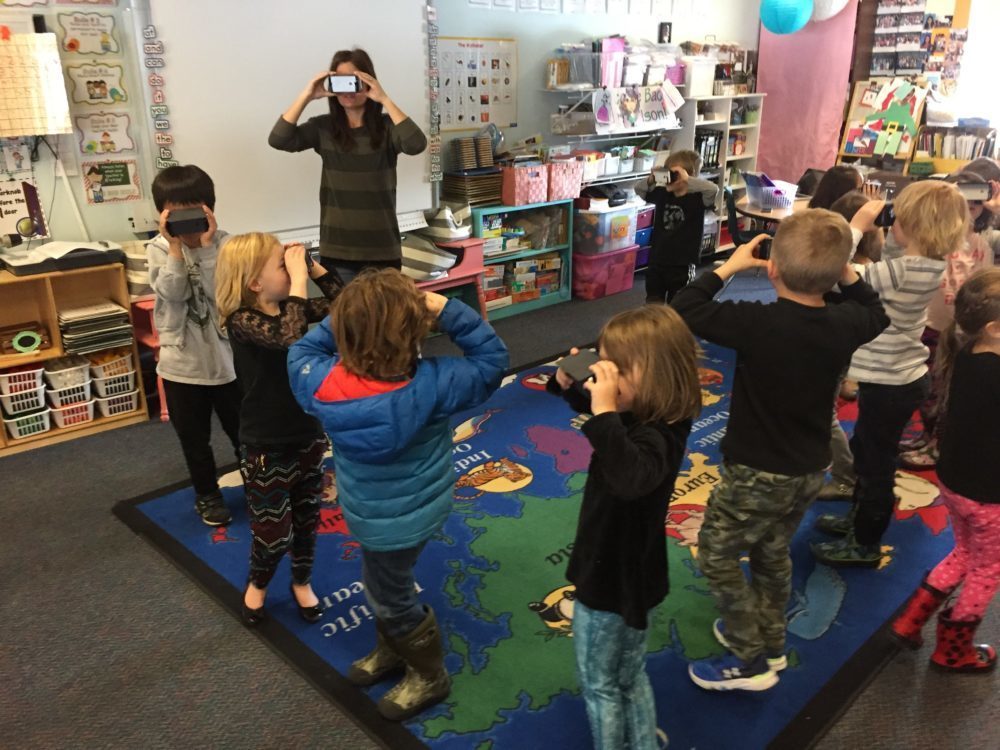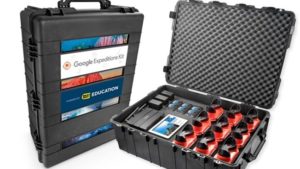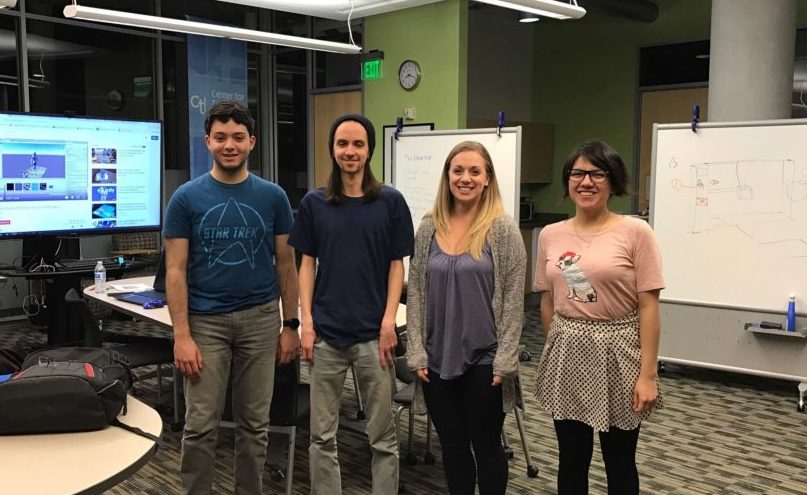
The following blog is the second part of a multi blog series by Paul Zimmerman, Technology Innovator at the Blaine County School District. Paul will be discussing the school district’s foray into the use of VR in the classroom, how it has impacted both students and teachers and where they see the technology and program going from here. Read his first blog here.
The start of this journey began in October of 2016 with some recycled phones and a timely announcement from Google about Google Expeditions. I was exploring other ideas for the upcoming year including redeploying two ActiveTables, Chromebook model testing and various other ideas. The problem I saw was that none of these were something we could implement district wide. It’s best to avoid projects that have limited availability to teachers because it will hamper adoption which then hampers transformative learning. The best way to gain wide adoption is to keep costs low and I accept the challenge of reutilizing old equipment with an open heart and an open mind. In this case, I had received several older iPhone 5’s around the same time Google Expeditions was announced. The first time I opened Google Expeditions and stood on the Moon I knew this would work, not only for me but for everyone.
As this idea was starting to form, there were many things to be considered. First and foremost was why. Why in the world would anyone listen to my idea about virtual reality in the classroom? Why would this matter to students and teachers when it’s an unproven technology outside of the novelty as a consumer product? Second, what would the cost be and what could I do to affect this? There had to be a way to keep costs low and approach this from a different angle, instead of the ‘buy everything’ first. Third was trying to understand how it would look in a classroom. Google Expeditions was brand new and nobody outside of their handpicked schools had done this yet. In reality we had no information or reference points to help make the best decisions. It was nearly all critical thinking and planning mixed in with some good old fashioned luck.
The challenges stemmed from looking at the things I listed above, the why, the cost and the classroom deployment. In addition to these, I had to combat the disillusionment that consumer virtual reality has created. What I mean to say is, the novelty of playing a game in VR is powerful but has no educational value. The students and staff I needed to work with all assumed that gaming was the extent of virtual reality and there was no substance beyond this. My goal was to change that mindset and frankly it had to be or this project would never work. With 100% honesty, every person who has experienced Google Expeditions in their classroom becomes a believer. I recently presented for the IETA in Boise and a good friend of mine had this feedback, after admittedly being disillusioned - He stated “I see it now.” The why was easier to articulate because every session was planned with the teacher based on their lessons. In this way, we were able to work together to enhance to content instead of replace it. Once teachers saw this happening and the reactions their students had, the why answered itself.

Google Expeditions kit
The primary cost of the premade Google Expeditions kits is $10,000 and that is certainly not feasible on a district scale, unless we plan on only buying one. With that in mind, I quickly realized that the phones in the kit were the major expense. This realization coupled with the ‘recycled’ phones I had on my desk sparked the idea that a community phone drive could eliminate the highest cost of the kit instantly! By looking at the project from this angle, it was now possible to get kits put together for $1,000 each instead of $10,000. Granted it requires work from the staff and buy in from the community but the savings make it worth it. Lastly, seeing how it would fit in the classroom was the last part of this I needed to explore. What I didn’t know at the time was that Google Expeditions has classroom management built right in. The virtual reality experience is completely controlled by a main device and therefore allows a teacher to control what the class is viewing and pause it if need be. Having this built in made the challenge of what it looks like in a classroom irrelevant. I didn’t need to worry about how a teacher would manage her classroom while using this because Google Expeditions had control baked in.
The goal with this project, and any project I identify as classroom applicable, is to offer teachers a new way to use technology to engage and inspire their students. Virtual reality in the classroom is not the ‘movie day’ of old but is actually meant to be a transparent tool for educating students. Generally, adoption of something like this happens in three stages. First, a concept or idea that may work in a classroom is targeted. Once the details are worked out, the second stage is not only deploying it but working to build its momentum. If a project has enough momentum from the staff, through conversations they have and feedback they share, it will eventually start to take on a life of it’s own. This marks the end of the second stage and the shift into phase three. Phase three is easy to recognize because you’ll begin hearing about your idea from others and the project creator wasn’t even involved. It’s at this point, when the project is now powered by the staff, that a technology innovator can move onto the next crazy idea.
In the next post, we’ll dive deeper into the details of this project from an implementation standpoint. It’s important to understand the approach because that will be what creates ownership from the staff and a project like this needs ownership (and I’ll explain why). Also, we’ll talk about approaches other districts can take to create this. There certainly is no one size fits all method to success but in general terms we can highlight some of the lessons we have learned to save you time.

Paul Zimmerman - Blaine County School District - Technology Innovator pzimmerman(at)blaineschools.org




Recent Comments